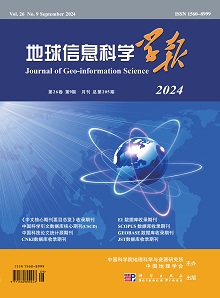基于HJ-1B的北京热岛效应时空变化监测
引用次数: 1
摘要
地表温度的变化可以反映城市的热环境,从而导致城市热岛的产生。北京作为大都市,城市热岛效应严重,分析研究北京城市热岛的时空变化具有重要意义。本文以环境卫星影像(HJ-1B) CCD/IRS为主要数据源,采用基于影像的方法反演2008 - 2011年北京地区地表温度,并利用MODIS温度产品对反演结果进行初步验证,分析了北京市城市热岛效应的年际变化。利用热场变率指数对热岛热岛进行定量分析。最后,分析了NDVI、NDBI与土地利用类型的关系。结果表明:(1)2008—2011年,北京市存在显著的热岛效应。热岛扩展从2008年到2010年,但2011年放宽热岛是5.2℃,5.2℃,9.2℃,8.2℃,分别;(2)有一个明显的热岛效应在2010年北京的四季,夏季热岛是最强,其次是春季和秋季,冬季是最弱的,和热岛是8.2℃,9.4℃,9.2℃,4.3℃,分别;(3)的定量分布表明从2008年到2011年在北京热岛热岛主要在城市,仿膳饭庄的热岛效应在南部(4)地表温度与NDVI呈负相关,地表温度与NDVI呈负相关,2011年昌平区热岛效应高于前3年;地表温度与NDBI呈显著正相关,NDVI和NDBI对城市热岛有显著影响,城市热岛随土地利用类型有明显的修正。因此,增加城市绿地面积和水域面积可以有效减缓热岛效应。本文章由计算机程序翻译,如有差异,请以英文原文为准。
Monitoring Spatio-Temporal Changes of Heat Island Effect in Beijing Based on HJ-1B
The change of land surface temperature(LST)can reveal the heat environment of city,which leads to urban heat island(UHI).As a metropolis,Beijing has a serious urban heat island effect,so,analyzing and studying spatial and temporal changes of Beijing's urban heat island has a great significance.In this paper,we referenced image-based method to retrieve the land surface temperature using Environment Satellite image(HJ-1B) CCD/IRS as the main data source from 2008 to 2011,made preliminary validation on retrieval result using MODIS temperature products,then analyzed the annual and inter annual changes of urban heat island effect in Beijing.Further,we used thermal field variability index to make quantitative analyze of UHI.Finally,we analyzed the relationship among NDVI,NDBI and land use types.The results show that:(1) between 2008 and 2011,there is a significant heat island effect in Beijing.The heat island expanded from 2008 to 2010 but eased in 2011,the UHI were 5.2℃,5.2℃,9.2℃ and 8.2℃,respectively;(2) There is a significant heat island effect in four seasons of Beijing in 2010,the heat island in summer is the strongest,followed by spring and autumn,winter is the weakest,and the UHI were 8.2℃,9.4℃,9.2℃ and 4.3℃,respectively;(3) The quantitative distribution of UHI in Beijing from 2008 to 2011 showed that the UHI is mainly in urban,the heat island effect in the Southern of Fangshan District and Daxing District reduced year by year,the heat island effect of Changping District in 2011 is higher than in the previous three years,and vegetation and water formed urban cool island;(4) LST and NDVI are negatively correlated.LST and NDBI are positively correlated obviously,NDVI and NDBI have a significant impact on urban heat island,and urban heat island has a clear correction with land use types.So,increasing the city green area and water area can effectively slow down the heat island effect.
求助全文
通过发布文献求助,成功后即可免费获取论文全文。
去求助
来源期刊
CiteScore
2.70
自引率
0.00%
发文量
3757
期刊介绍:
Journal of Geo-Information Science is an academic journal under the supervision of Chinese Academy of Sciences, jointly sponsored by Institute of Geographic Sciences and Resources, Chinese Academy of Sciences and Chinese Geographical Society, and also co-sponsored by State Key Laboratory of Resource and Environmental Information System, Key Laboratory of Virtual Geographic Environment of Ministry of Education and Key Laboratory of 3D Information Acquisition and Application of Ministry of Education. Founded in 1996, it is openly circulated in the form of a monthly magazine.
Journal of Geoinformation Science focuses on publishing academic papers with geographic system information flow as the main research object, covering research topics such as geographic information cognitive theory, geospatial big data mining, geospatial intelligent analysis, etc., and pays special attention to the innovative results of theoretical methods in geoinformation science. The journal is aimed at scientific researchers, engineers and decision makers in the fields of cartography and GIS, remote sensing science, surveying and mapping science and technology. It is a core journal of China Science Citation Database (CSCD), a core journal of Chinese science and technology, a national Chinese core journal in domestic and international databases, and it is included in international databases, such as EI Compendex, Geobase, and Scopus.

 求助内容:
求助内容: 应助结果提醒方式:
应助结果提醒方式:


